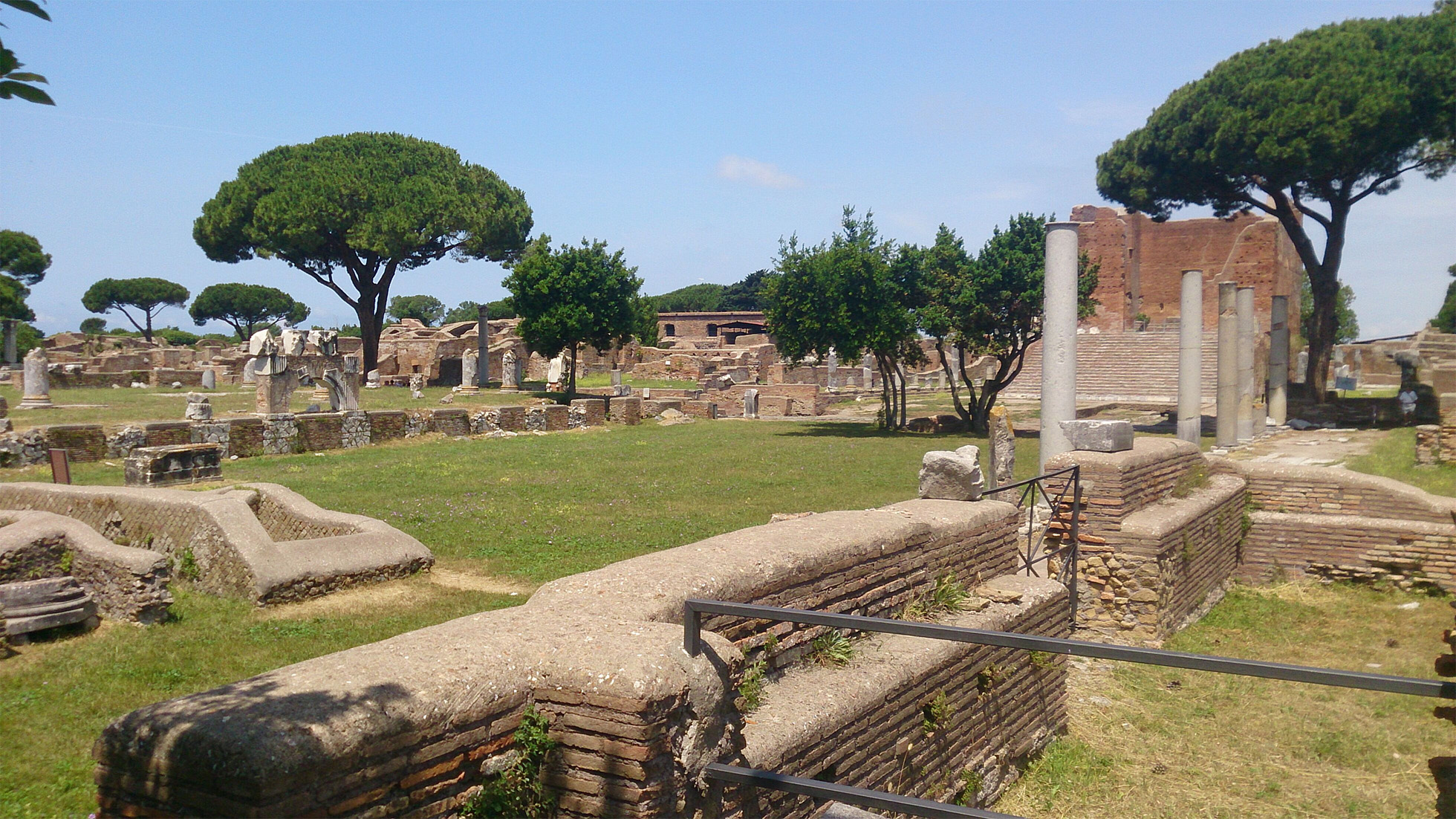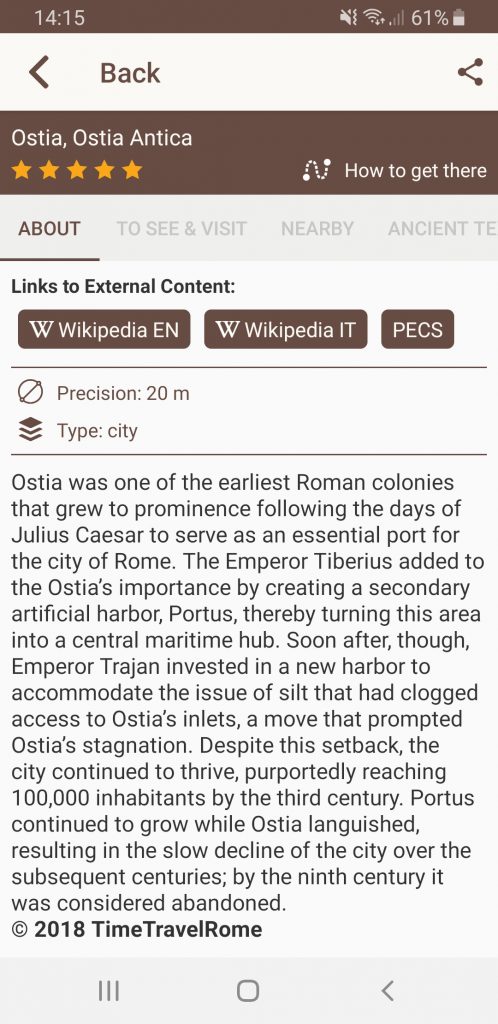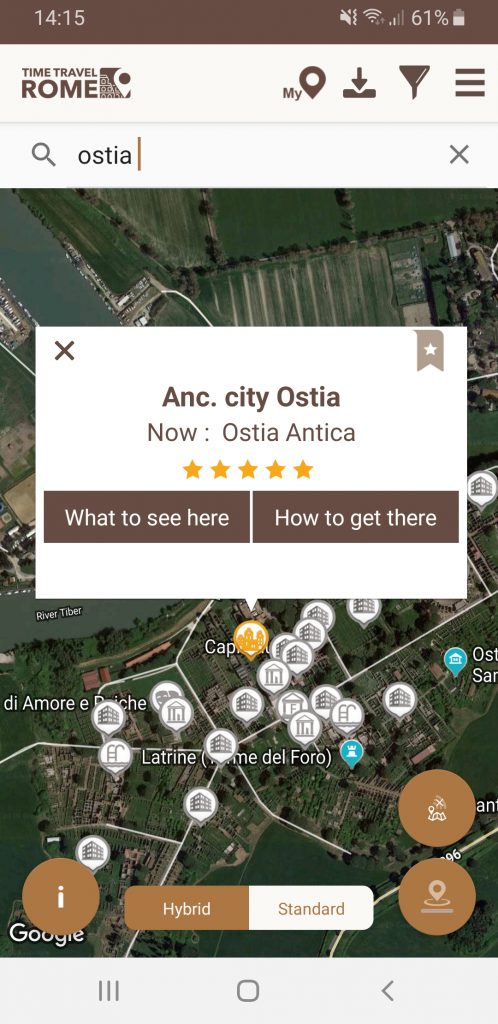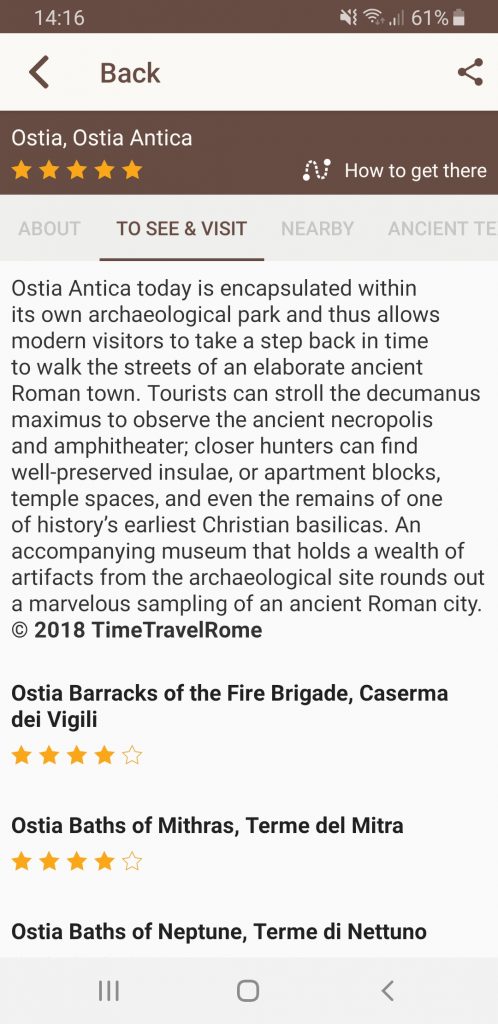Despite being so close to Rome, few tourists visit Ostia. For those that do, it’s a relaxed suburban train ride from Ostiense (near the Piramide Metro station) and a leisurely 5-minute walk to an archaeological site that recreates the past in a way that Rome cannot. Where the grand temples and monuments of the ancient Roman capital have undergone centuries of modification, and are now surrounded by modern buildings, Ostia Antica has been preserved as an intact city.
The open spaces and accessible ruins make Ostia Antica a wonderful day trip for families. Winding cobble paths lead tourists on an intimate journey throughout the beautifully preserved city. Visitors can freely explore the houses and commercial area. Very few of the buildings are roped off (only when structural safety is a concern) giving a real sense of discovery and connection with the people who once lived and worked in the ancient city.
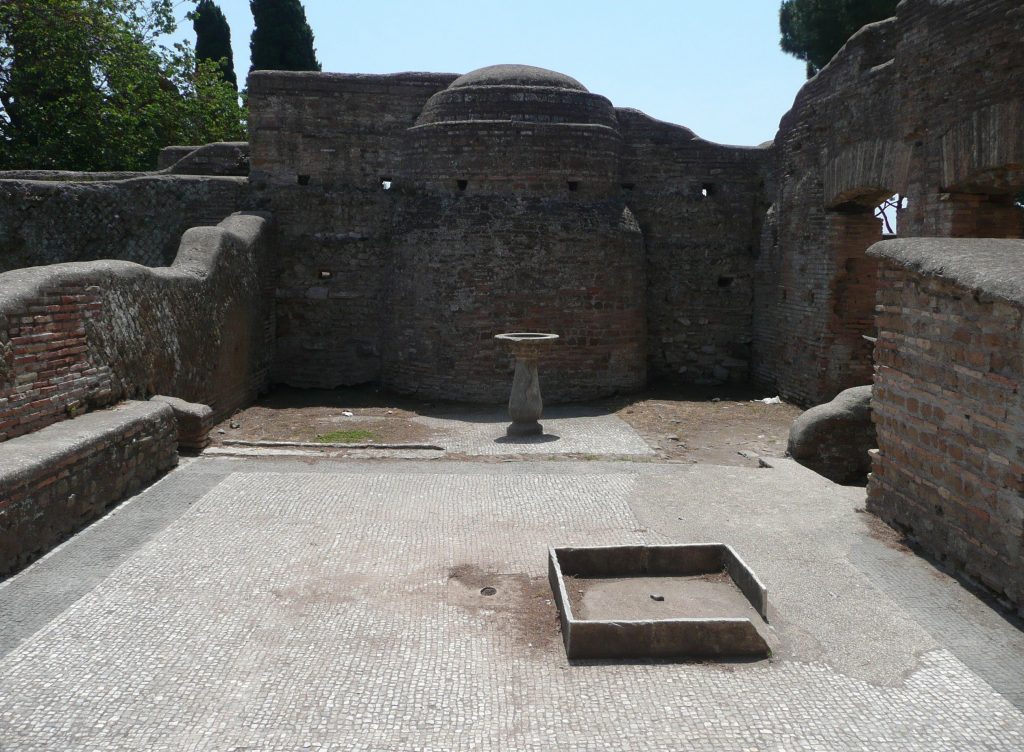
Unlike the more popular Pompeii and Herculaneum, visitors to Ostia won’t have to fight the crowds. There’s plenty of space to run, walk, and sit on your journey through the city – strolling the Decumanus Maximus, visiting the baths and market area, taking a seat in the ancient theatre, walking room to room along residential streets, stepping through doorways, peering up the ancient stairs that lead to the upper apartments. Every step uncovers something new that makes you reconsider what life was like for the people of ancient Ostia.
Ostia’s Ancient Beginnings
The salt flats along the Tiber River attracted a small settlement from as early as the Bronze Age, around 1400 BC. Ancient authors confirm that Roman Ostia was founded by the fourth king of Rome, Ancus Marcius, in 620 BC with its name deriving from the Latin word “ostium”, meaning “river mouth”. All that remains from this early period are traces of an ancient road, known as the Via della Foce (“Road of the Mouth”). The road led south-east from the mouth of the Tiber and its continued use created the irregular forked arrangement of the Imperial-era city grid.
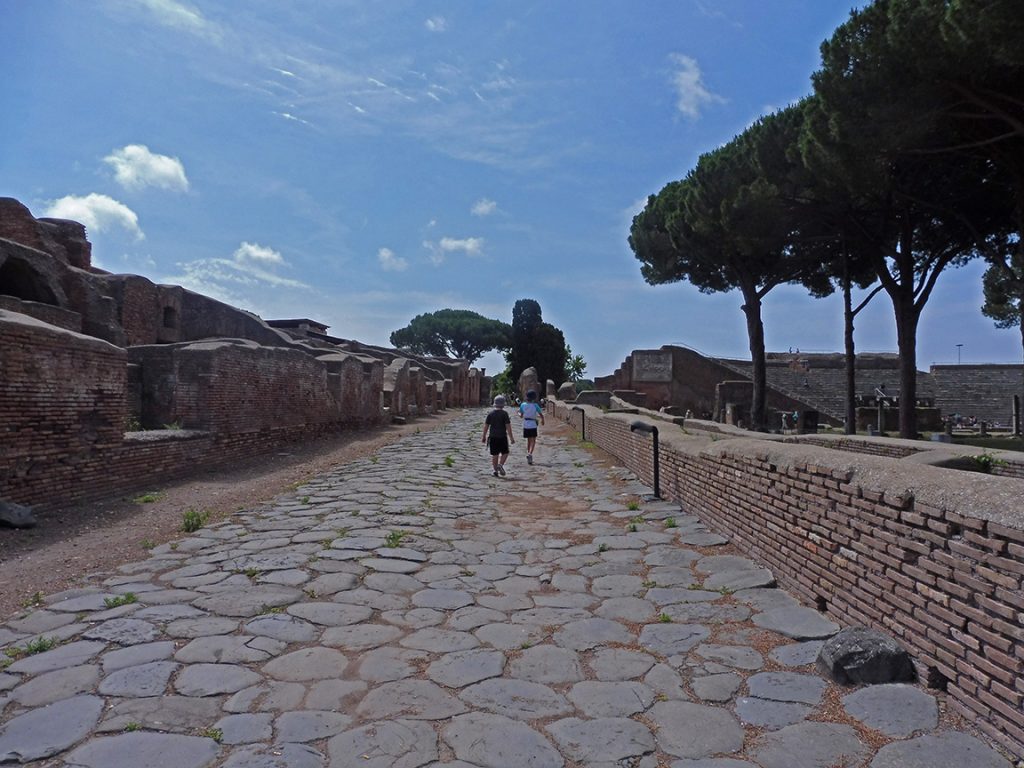
During the 4th century, a military camp, known as a castrum, was established near what would later be the Forum. The rectangular fortress was built with walls of large tufa blocks, it measured 194 x 125.7 metres overall with four main gates. The main streets were laid out in the typical Roman fashion of Cardo and Decumanus. The town soon supported a military harbour and was used as a naval base and a seat of the quaestores classici. The city prospered as a major commercial port during the late Republic during which it was an important trade centre supplying Rome with grain and exotic goods from Sicily, Sardinia, and Africa. At the height of prosperity during the 2nd and 3rd centuries, several Roman emperors sponsored large construction projects in the city. However, as shipping activities moved from Ostia to Portus during the middle of the 3rd century, Ostia began to decline. It was eventually abandoned in the 6th century AD and left to be covered by silt and sand from the Tiber River flood waters.
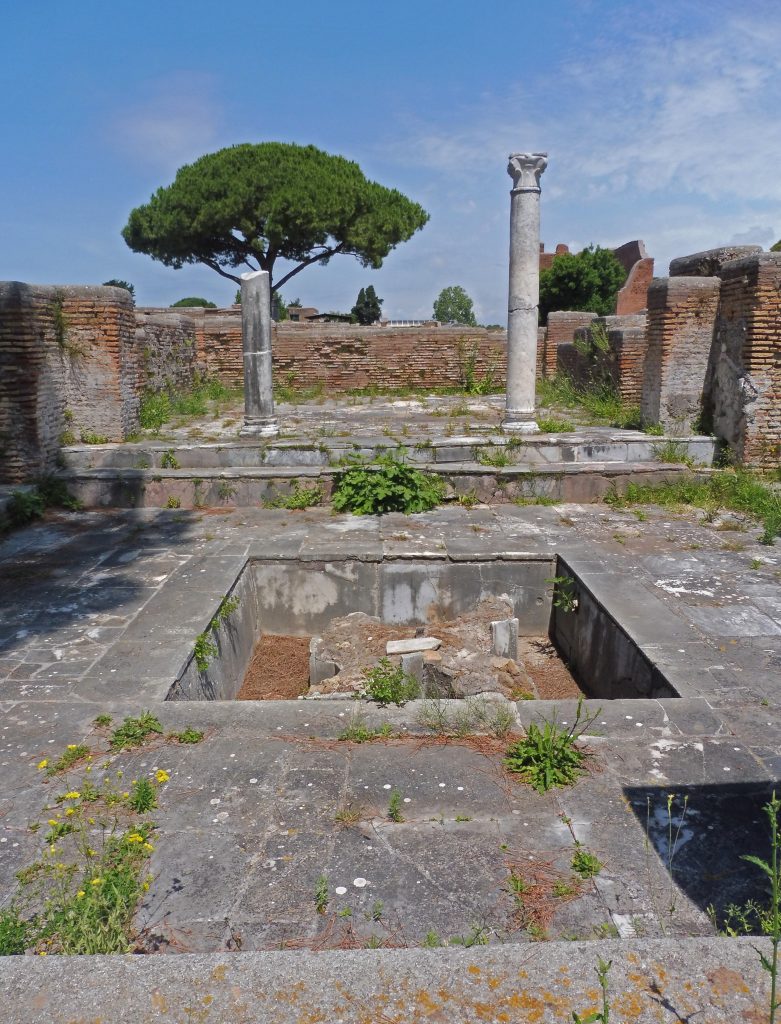
Following discoveries at the site during the nineteenth century, excavations began in the 1880’s and continue today. The entire city has not yet been revealed. As it is, Ostia Antica is a hugely sprawling port town with visible ruins covering over 170 acres (69 hectares) from the necropolis along the Via Ostiens, along the main Decumanus and its network of minor streets, and leading eventually to the modern Tiber with the remains of luxurious mansions along its bank. For the determined visitor, it would take an entire day (or two) to truly do the site justice. For most visitors, several hours spent exploring the heart of the city is enough.
A Glimpse at Life in Roman Ostia
Walking the ancient streets reveals a working city alive with taverns, baths, shops, and guild centres. Much of the graffiti, wall paintings, and mosaics are focused on shipping and trade. The bustling city serviced a hardy population of soldiers, wagon-drivers, sailors, naviculari (shipmasters), and traders.
Juvenal’s Satire 8, which takes a humorous look at the paradoxes of aristocratic conduct, suggests that Ostia was well known for its taverns.
“Send your general to Ostia, O Caesar! But search for him in some great tavern. There you will find him reclining cheek-by-jowl with some common cut-throat, in the company of sailors, and thieves, and runaway slaves, among executioners and cheap coffin-makers, or of some eunuch priest lying drunk with idle timbrels.”

Photo source: Meiggs, R,. Roman Ostia, Oxford, Clarendon Press, 1973. Plate XXVI, b.
There are some eighty tabernae or popinae (small taverns and food bars) identified in Ostia. They are often on street corners where busy residents could grab a meal and a drink on their way to or from work, or while visiting the baths. Their style is completely different to those seen at Pompeii. In Ostia, the food counters often block the doorways with a prominent water fountain alongside. Guests would sit outside in the street on wooden benches. Only the largest taverns offered a room or garden with indoor seating. A shelf for drinking vessels and wine was built on the wall within easy reach of the shopkeeper to quickly serve passers-by. In many of the ancient bars, the counters, water basins, and the lead pipes used to supply their water can still be seen. Grinding mortars and foci for cooking show that some taverns served spiced wine or prepared meals.
From this many tabernae, it’s just a few steps to the entrance of some lavish bath or to the side streets with their multi-storey apartments. There are taverns alongside the fish market, the grain warehouse, theatre, next door to millers, fullonicae, bakeries, and hotels. At every turn, visitors to Ostia Antica see evidence of the everyday activities and daily life of the ancient residents. It’s this accessibility that makes Ostia one of the most evocative ancient Roman sites in Italy.
Time Travel Rome
Here what you can see and read about Ostia Antica in Time Travel Rome mobile app
Bibliography
Boin, Douglas. Ostia in Late Antiquity. Cambridge University Press, 2013.
Hermansen, Gustav. Ostia: Aspects of Roman City Life. University of Alberta, 1981.
Juvenal, Satires, Satire VIII 173.
This article was written for Time Travel Rome by Michelle Richards.
